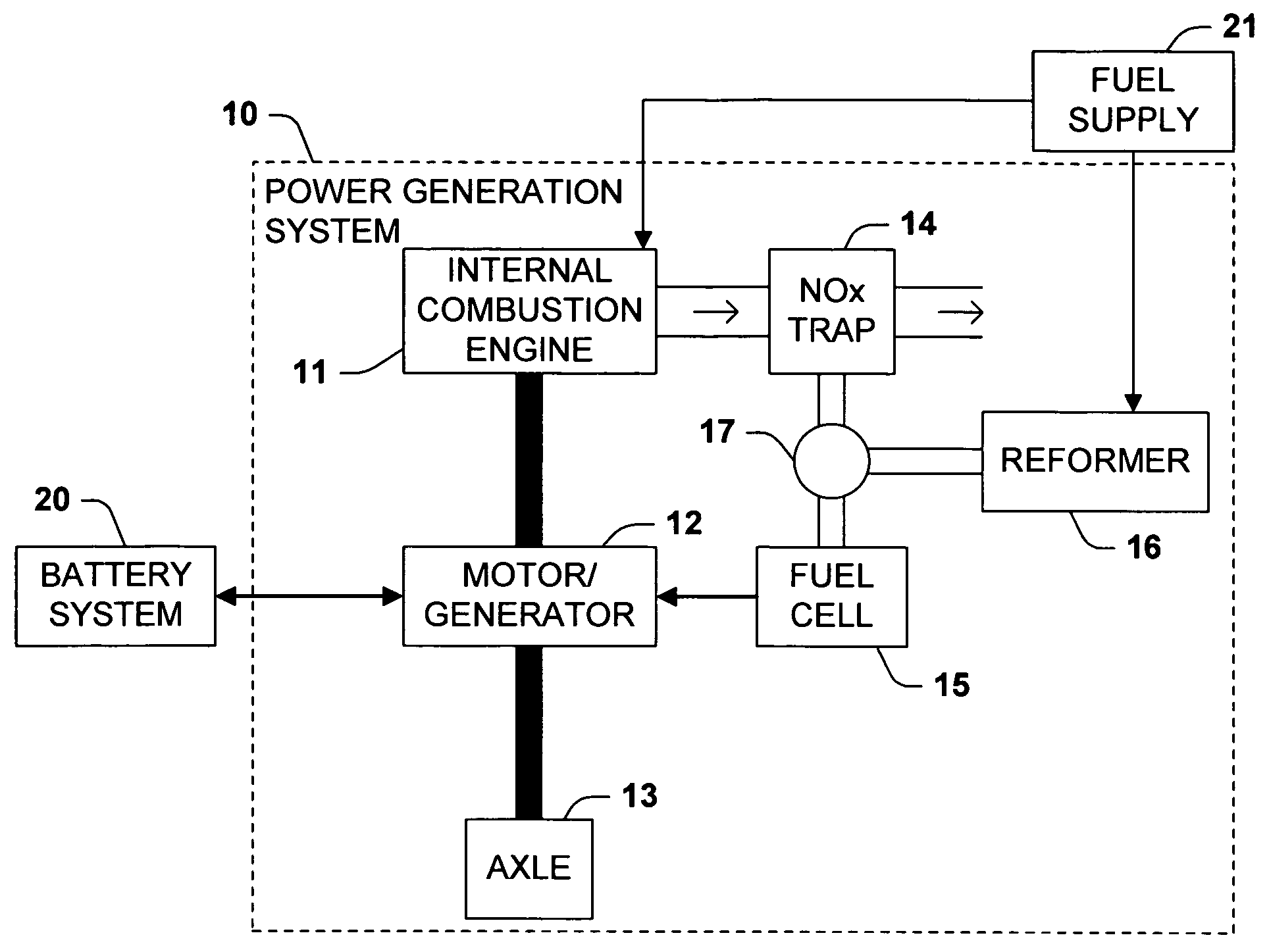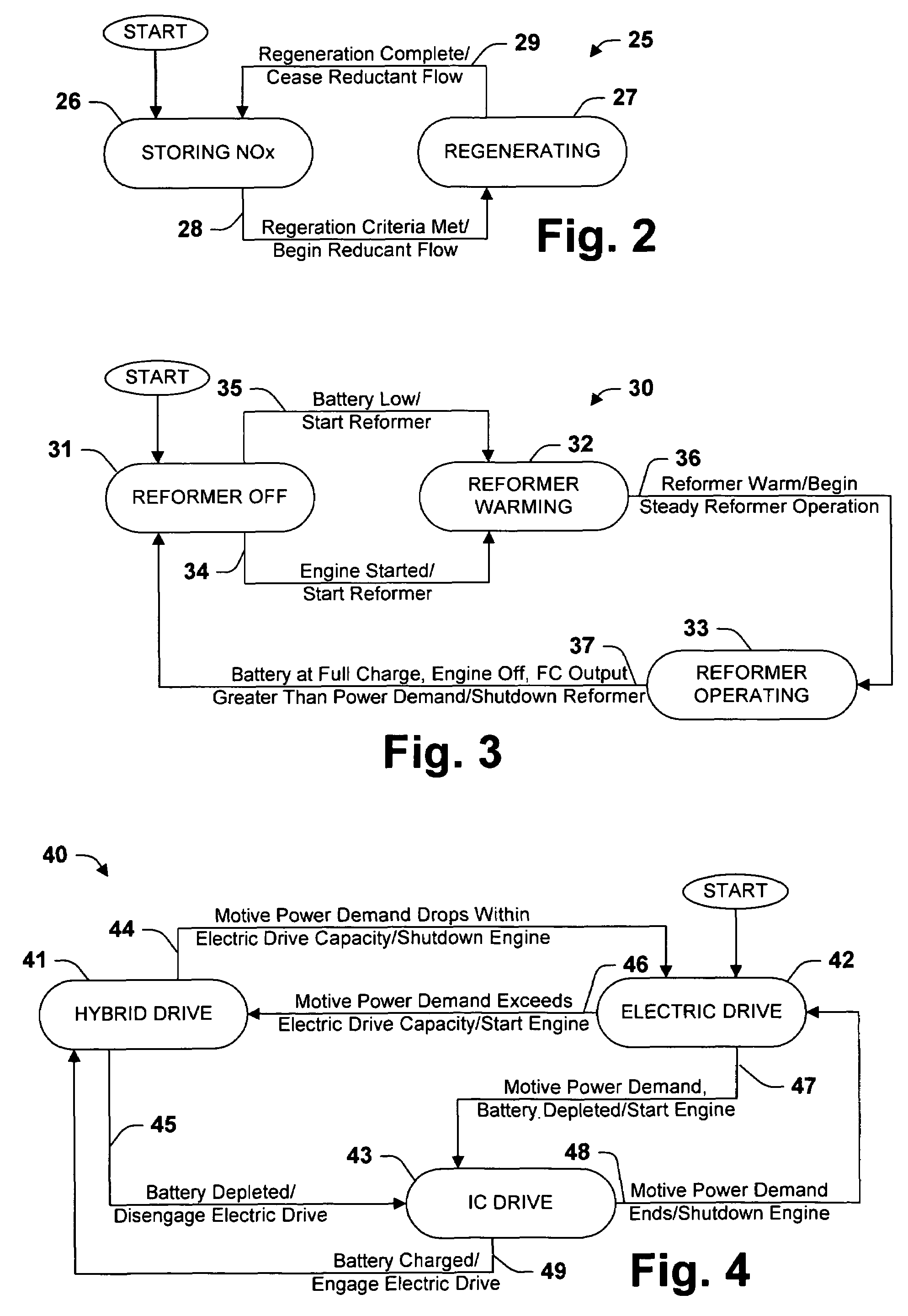Mechanism and method of combined fuel reformer and dosing system for exhaust aftertreatment and anti-idle SOFC APU
a technology of exhaust aftertreatment and combined fuel, which is applied in the direction of exhaust treatment electric control, battery/fuel cell control arrangement, separation process, etc., can solve the problems of exhaust that is too oxygen-rich for three-way catalysts to be effective, put considerable effort toward meeting, etc., to facilitate the use of a reformer, reduce pollution, and slow the response time
- Summary
- Abstract
- Description
- Claims
- Application Information
AI Technical Summary
Benefits of technology
Problems solved by technology
Method used
Image
Examples
Embodiment Construction
[0019]FIG. 1 is a schematic illustration of an exemplary power generation system 10 according to one aspect of the present invention. The power generation system 10 comprises an internal combustion engine 11 and a motor / generator 12, either of which can drive an axle 13. Exhaust from the internal combustion engine 11 is treated by a NOx trap 14. The NOx trap 14 is intermittently regenerated with reformate from a fuel reformer 16. The reformate is selectively directed to the NOx trap 14 by a valve 17. Reformate not used for regeneration is directed to a fuel cell 15, which produces electric power from the reformate. The electric power can be used to power the motor / generator 12, stored in the battery system 20, or used to power other devices. Both the internal combustion engine 11 and the reformer 16 operate using fossil fuel from a fuel supply 21. The fuel supply 21 and the battery system 20 are illustrated as separate from the power generation system 10, but can be incorporated the...
PUM
 Login to View More
Login to View More Abstract
Description
Claims
Application Information
 Login to View More
Login to View More - R&D
- Intellectual Property
- Life Sciences
- Materials
- Tech Scout
- Unparalleled Data Quality
- Higher Quality Content
- 60% Fewer Hallucinations
Browse by: Latest US Patents, China's latest patents, Technical Efficacy Thesaurus, Application Domain, Technology Topic, Popular Technical Reports.
© 2025 PatSnap. All rights reserved.Legal|Privacy policy|Modern Slavery Act Transparency Statement|Sitemap|About US| Contact US: help@patsnap.com



